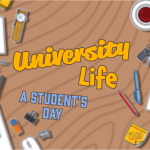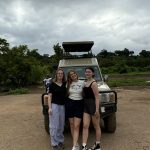The big dig, also known as the Durotriges Project, started in 2009 and is an amazing experience for anybody studying archaeology, anthropology and related courses at Bournemouth University. It is also available for other people to attend e.g. field schools or volunteers.
 This excavation project is an archaeological investigation into the history of southern England, specifically the transition from the late Iron Age to the early Roman period. However, like most things, they are never as straight forward as it seems. For example, this year we discovered a Neolithic hand axe, which adds 2000 years more to the site.
This excavation project is an archaeological investigation into the history of southern England, specifically the transition from the late Iron Age to the early Roman period. However, like most things, they are never as straight forward as it seems. For example, this year we discovered a Neolithic hand axe, which adds 2000 years more to the site.

The main purpose of this year was to excavate two trenches. One of which had two obvious roundhouses and one which had a series of what appeared to be ditches in.
 Throughout the five weeks, in trench E (the long trench), a ditch was excavated which led to Durotrigan burials being discovered and in trench D (the t shaped trench), a roman burial was discovered. This will subsequently provide a lot of information on how the Durotrigan tribe lived and potentially how they lived through the roman ‘invasion’.
Throughout the five weeks, in trench E (the long trench), a ditch was excavated which led to Durotrigan burials being discovered and in trench D (the t shaped trench), a roman burial was discovered. This will subsequently provide a lot of information on how the Durotrigan tribe lived and potentially how they lived through the roman ‘invasion’.
 On the dig, you learn the techniques necessary for excavating and the subsequent recording of what was excavated and the finds associated with it. No matter what you find, you are allowed to continue to excavate and ‘lift’ any finds.
On the dig, you learn the techniques necessary for excavating and the subsequent recording of what was excavated and the finds associated with it. No matter what you find, you are allowed to continue to excavate and ‘lift’ any finds.
Alongside excavation, you take part in four other aspects associated with excavation. This includes; logistics. which keeps the whole site running smoothly; mainly with providing water for the people on site, environmental through flotation, which cleans samples taken from excavations and dry sieving to find key elements missed through flotation. Finds which consists of cleaning anything that has been found have to be done in particular way depending on what it is. Geophysical surveying using the machines to carry out physical surveys through magnetometry and earth resistivity is also involved in the project.
 In my own experience of the dig, I excavated pits and ditches alongside helping others with larger features present. In the final week three of us working on a feature discovered a large amount of animal bone which seemed to be semi articulated. It was most likely from a cow.
In my own experience of the dig, I excavated pits and ditches alongside helping others with larger features present. In the final week three of us working on a feature discovered a large amount of animal bone which seemed to be semi articulated. It was most likely from a cow.
A great experience in my eyes.
By Annabel Scott











